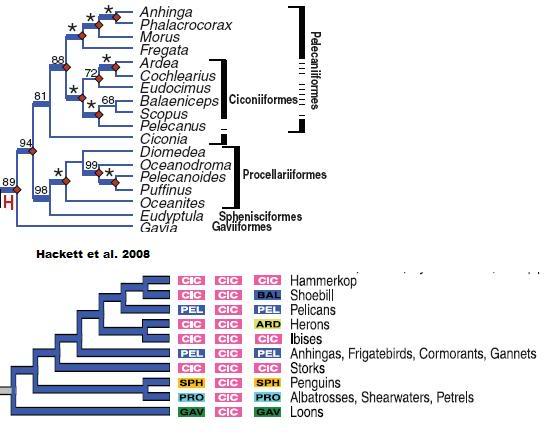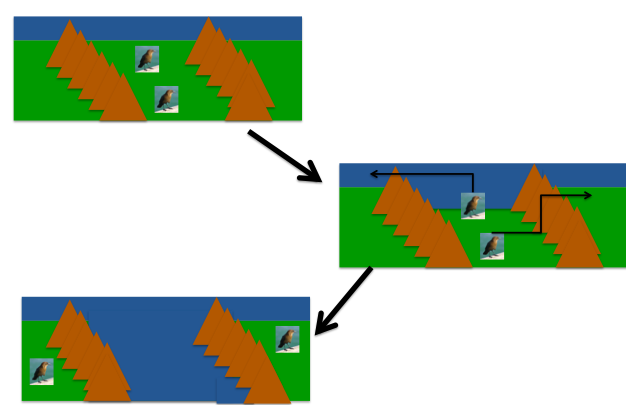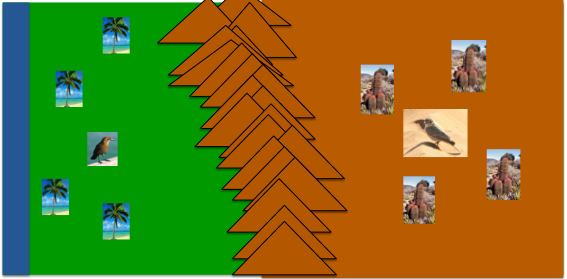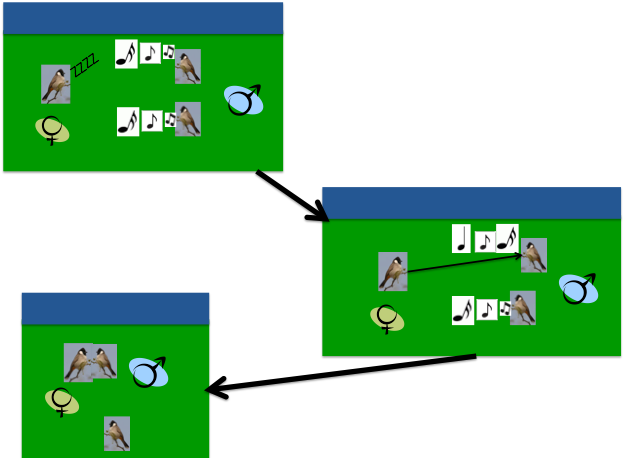Songbird Signalling Behavior: Duetting
Biology 342 Fall 2010
Phylogeny

(Image courtesey of http://slybird.blogspot.com/2008/07/avian-relationships-what-do-we-know.html)
It is believed that Passeriformes, or songbirds, evolved 50 million years ago. As seen above the Family tree describes the clade and branching of Passeriformes evolution. They are divided into two parvorders Corvida and Passerida. Interestingly, the brain structure correlated with song production--the HVc--is a homoplastic structure. This is evident from that fact that song birds, hummingbirds, and parrots all have this similar structure, but each of these groups have developed song independently from one another. Unfortunately there exists no overarching study of the evolution of duetting. Each researcher focuses on his or her specific species without ever addressing the macrodevelopment of this behavior. Consequently in this section only the phylogeny of solo bird song will be assessed. There are three main theories regarding the diversity of thisf song found in nature.
Theory 1
One hypothesizes that genetic isolation of the small population may lead to high rates of extinction and excessive inbreeding, which in turn yields mutated songs for different population. Thus natural selection is responsible for establishing isolating barriers (Brown and Lemon). This is commonly referred to as the contrast reinforcement hypothesis.

The image displays the notion set forth by this theory. The two birds orginally were inhabiting the same are,a however conditioned change forces the birds to migrate away fromtheir native land. Since the two birds choose differnt paths, the two populations are isolated from one another. Conseqently, over time each invented their own dialect which ultimately becomes two distinct songs.
Theory 2
The second hypothesis states that neighboring populations establish habitats with differing climate, edaphic vegetational characteristics, thus they sing in different manners (Nottenbohm).

The image displays two neighboring species habituating to two different biospheres. The bird on the left has a tropical climate while the bird on the right has a desert climate. These differing biospheres mean that these birds will encounter different stimuli thus fostering differing songs..
Theory 3
The last hypothesis states sexual selection by female choice is thought to facilitate the evolution and exacerbate distinct song traits. Intra-sexual selection may also contribute to song diversification by favoring individually distinctive song patterns (Podos, Huber, and Taft).

The image displays sexual selection by female choice. Initially both males sing the same song, which elicits no response from the female. The male on the top however changes his song slightly as a response to the females lack of attention. This change elicts a positive response from the the female thus she chooses this male. This is the paradigm of the third theory presented.